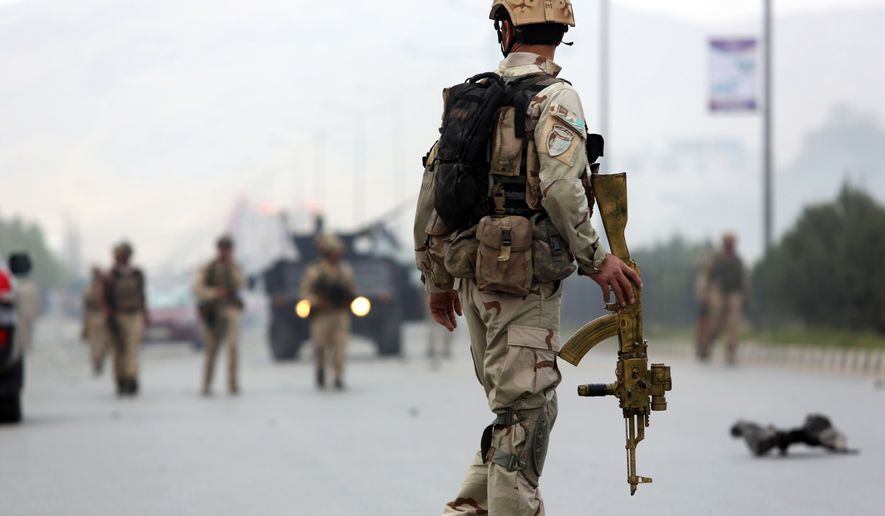The Afghans have fired the commanders of a large ground force in Helmand province, a critical battleground where the Taliban is contesting allied control and where a U.S. commando was killed this month.
In a rare press briefing on the Afghanistan war from the NATO command in Kabul, Army Brig. Gen. Wilson Shoffner said Tuesday that the Afghan National Defense and Security Forces are showing “mixed results” in the conflict’s 15th year. Too many commanders are incompetent and/ or corrupt. There is also an army recruiting shortfall of 25,000, and the forces do not respond well to a crisis.
Those problems surfaced in the 215th Corps in Helmand. Though comprising only 3 percent of Afghanistan’s 32 million population, the province and its poppies are coveted ground for the Taliban, which have launched a series of offensive campaigns.
The Afghans fired the 215th’s top commander and brigade leaders, and now are rebuilding the entire corps because of soldiers quitting and equipment breaking down.
“I want to stress that it’s going to take time for the rebuild of the 215th Corps,” Gen. Shoffner, deputy chief of staff for communications, told reporters at the Pentagon.
He said corruption by corps leaders involved selling supplies for personal gain and cash payroll irregularities.
“There are three fundamental things that have to happen in a unit,” the general said. “Soldiers have got to be paid on time. They’ve got to be fed on time. And they’ve got to be given leave when they deserve leave. And if one of those things, or a combination of those things, doesn’t happen, then the soldiers will leave. Now sometimes they’ll come back, but that obviously is no way to run an organization.”
Corps special operation units were married up with American special forces soldiers on Jan. 5, when a Taliban attack in Marjah in southern Helmand killed Staff Sgt. Matthew Q. McClintock, a Green Beret.
There were reports that the U.S. command was slow to respond, but Gen. Shoffner said warplanes arrived and launched 12 airstrikes, killing the Taliban or forcing their retreat.
Despite the firefight, the general argued that U.S. forces, now set at 9,800, are not involved in combat.
“We’re no longer doing the fighting,” he said, likening the U.S. military’s advise-and-assist role to coaches in a football game. “The Afghan security forces have that all on their own. So looking back at 2015, this was their first year when they had the fight all on their own.”
He said that of 404 Afghan districts, nine are in Taliban control. But he said the count is dynamic and local forces have shown that, if they have time to plan, they can retake those areas.
The Taliban, he said, “were not able to hold ground, and they were not able to govern.”
Gen. Shoffner said special Afghan forces raided two Taliban prisons and freed soldiers, an operation that signals that local forces are not forgotten.
Last month the Pentagon issued a sober report on Afghanistan. The report, “Enhancing Security and Stability in Afghanistan,” warned that the “security situation in Afghanistan deteriorated” because of “an increase in effective insurgent attacks and higher [Afghan National Defense and Security Forces] and Taliban casualties.”
It concluded: “Although the ANDSF maintain a significant capability advantage over the insurgency, insurgents are improving in their ability to find and exploit ANDSF vulnerabilities, making the security situation still fragile in key areas and at risk of deterioration in other places.”
• Rowan Scarborough can be reached at rscarborough@washingtontimes.com.




Please read our comment policy before commenting.